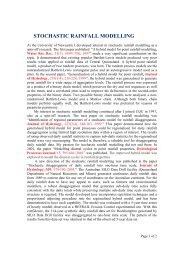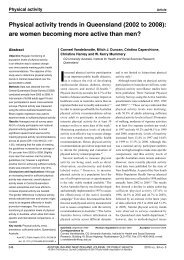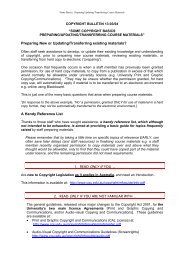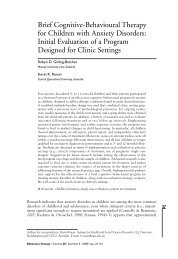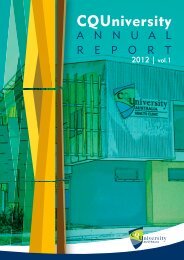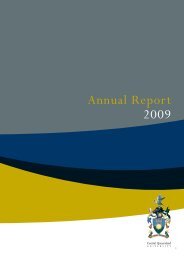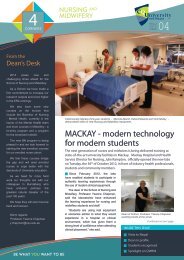2007 Annual Report - Central Queensland University
2007 Annual Report - Central Queensland University
2007 Annual Report - Central Queensland University
Create successful ePaper yourself
Turn your PDF publications into a flip-book with our unique Google optimized e-Paper software.
<strong>2007</strong> Centre for Plant & Water Science <strong>Annual</strong> <strong>Report</strong>COMPARISON OF PHYTOCAPS WITH CLAY CAPS FOR THEIR ABILITY TOLIMIT PERCOLATION OF WATER INTO LANDFILLSSUMMARYA number of phytocapping trials have been established in Australia over the last 8 years (seeannual reports of CPWS; www.cpws.cqu.edu.au). These trials show the potential of phytocapsto limit percolation of water into landfills, but they do not actually quantify the percolation rate.This quantification is required to convince the Environmental Protection Agencies of theefficacy of phytocaps over EPA approved clay capping systems in limiting the entry of waterinto the landfill, and providing other environmental benefits.A number of Universities, The Waste Management Association of Australia (WMAA), privateconsultants, and several government departments have jointly undertaken a nation-widecomparative study, A-ACAP (Australian Alternative Covers Assessment Program) to quantifyand compare percolation rates of phytocapping systems with those of clay capping systems.Field trials have been established in varying agro-climatic conditions at Townsville, Lismore,Melbourne, Adelaide and Perth. This study is sponsored by the ARC Linkage and the industries,via WMAA.At each site, large lysimeters (20 m x 10 m) were constructed (see Fig 1) and two basictreatments, phytocapping and clay capping were introduced. Additional treatments were alsointroduced to assess the effects of landfill gasses on plant growth and development, and to studyroot biology and plant-soil interactions. Phytocapping treatment consists of unconsolidated soiland the clay capping treatment contains compacted clay and top soil. The phytocappingtreatment has been planted with a wide range of native grasses and/or tree and shrub species.The clay capping treatment was planted with grasses as per EPA requirement. The lysimetershave been heavily instrumented so that an accurate record of rainfall, runoff, percolation andevapotranspiration can be prepared.The initial two years have allowed us to identify trial sites, establish experimental plots, installand calibrate instruments, and successfully establish and maintain vegetation on phytocappingsystems. Data collection and analysis are currently under way and will continue for a further 2-3years. Further details of this trial may be obtained fromhttp://www.wmaa.com.au/aacap/aacap.html.39





